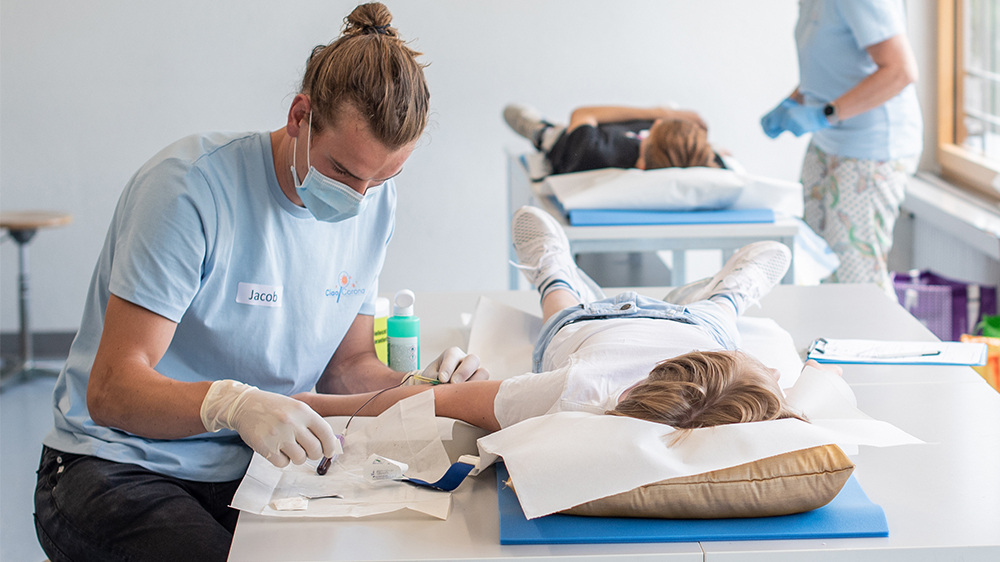Navigation auf uzh.ch
Navigation auf uzh.ch

The first stage of testing from mid-June through mid-July 2020 in a study that included antibody detection being conducted by the University of Zurich found that 2.8% of the 2,500 schoolchildren tested, or an average of 28 children out 1,000, display antibodies against the novel SARS-CoV-2 coronavirus. The seroprevalence rate varied between 1.0% and 4.5% depending on the municipality and school. This means that the percentage of SARS-CoV-2 seropositive children was similar to the percentage of seropositive subjects in a sample of randomly selected adults from the same region in July 2020. Furthermore, the researchers found no differences between genders, as the infection rates among girls and boys are the same.
The first stage of testing also revealed that symptoms among schoolchildren do not constitute evidence of a SARS-CoV-2 coronavirus infection. “Over the period examined, 73% of the schoolchildren exhibited possible COVID-19 symptoms, but children who tested negative for SARS-CoV-2 presented such symptoms just as frequently as those who tested positive,” says University of Zurich epidemiologist Susi Kriemler, who is heading the study.
This first stage of testing detected no clustering of SARS-CoV-2 seropositive cases within schools and classes. Per 100 classes, there were 67 without a single infection case, 29 with one infection case, three with two infection cases, and one with three infection cases. These preliminary findings support the current hypothesis that children rarely get infected at school and are likelier to contract the coronavirus in their private surroundings, in the family setting for example.
However, Milo Puhan, the director of the Epidemiology, Biostatistics and Prevention Institute at UZH and the initiator of the study, advises caution in interpreting the results: “Due to the lockdown, the children physically attended school for only a relatively brief two-month period between the onset of the novel coronavirus and the first stage of testing. During this acute phase, they arguably more likely were exposed to the virus in the family setting. We have to wait for the next testing stages before we can make reliable statements.” Further testing of children is scheduled in autumn 2020 and spring 2021. Parents and school staff will be examined again in spring 2021. All of these testing stages will show whether and how SARS-CoV-2 is spreading in schools and within families.
The percentage of SARS-CoV-2 seropositive schoolchildren among 6 to 9-year-olds was a bit higher than among 9 to 13-year-olds and 12 to 16-year-olds. The difference, however, is statistically not significant: the average seroprevalence rate was 3.5% among first and second-grade students (ranging from 1.6% to 5.9% across schools), 2.5% among fourth and fifth-graders (1.1% to 4.5%), and 1.5% among seventh and eighth-graders (0.5% to 3.0%). Study leader Kriemler explains that younger children in particular have close physical contact with their parents and other adult relatives and family friends and may thus, contrary to prevailing current opinion, get infected just as often as older children.